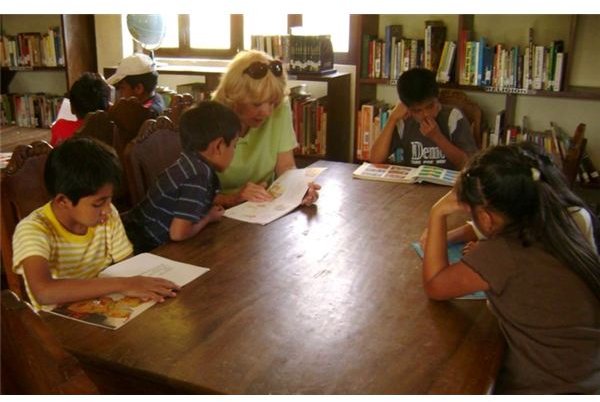Preparing Summer Reading Journals for Your Students: Elementary to Higher Level Students
Why Set Up a Summer Reading Journal?
Left without some guidance, there is a good chance that summer reading – for many students – involves little more than the instructions on their video game cartridges. As a savvy teacher, enlist parental support and connect children, parents and libraries or book stores that offer a summer reading program.
It is a good idea to make some suggestions for books that should be a ‘must’ on the kids’ summer reading lists; this avoids the children’s natural tendencies to pick out easy reading material that is more suitable for a lower grade level. At the same time, it helps parents to pick out the hot reads that the children currently enjoy at school or during library time.
Putting Together the Reading Journals
Make a reading journal template. Fill out a sample sheet to show parents how their children can get the most out of using this educational tool throughout the summer. A good example includes specific but also general writing prompts.
Briefly highlight the important points of a chapter or plot summary, what kinds of discussion questions to pose and also how to talk through the children’s reaction to a book that the parents most likely did not read.
For younger children, reading response journal ideas could include drawings and other craft projects that express their connection to the text and also their reactions to the characters. Adding this artistic element to the aspect of summer reading also helps to break up the tasks of sitting and reading with the opportunities for being creative and expressing themselves.
Fostering Community Involvement
Once the parents understand the concept of the summer reading journal and commit to follow through with the idea, find ways of connecting parents, students and the community. Although not prohibitively priced, books can be the kind of expense that is not in ever family’s budget.
Contact local libraries to find out if they are participating in reading challenge programs. Many of these programs encourage kids to keep track of how many books or pages they have read. They may even offer rewards for completing a certain amount.
Since the reading journals that are part of the program only offer an opportunity to list a book’s title but do not provide space for journaling thoughts, use them in addition to the summer reading journal that is put together for the parents.
Another way to keep a reading journal and get a free book at the end is made possible by Barnes & Noble. Their summer reading program requires children between grades one and six to read any eight books, record their titles and notate the location that is mentioned in each book. Upon completion – but before a certain date usually set in September – the children take the reading journal to a local Barnes & Noble store and receive a free book the child may pick from a pre-determined list.
It is evident that a summer reading journal used in conjunction with community involvement is an excellent method for keeping students’ reading enthusiasm going strong.
Sources
- Tenafly Public Schools https://www.sde.ct.gov/sde/site/default.asp
- Connecticut Department of Education: https://www.sde.ct.gov/sde/site/default.asp
- Barnes & Noble’s Summer Reading Program
Photo Credit: ‘Volunteer reading to kids in the library room’ by Mmccreary1/Wikimedia Commons at https://commons.wikimedia.org/wiki/File:Volunteer.jpg
